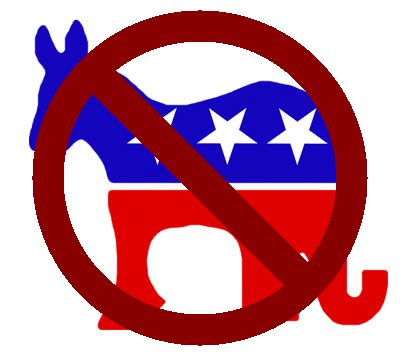A third party analysis of California's general election ballot

The 2010 elections have proven to be an historic year for third party and Independent politics in the United States, with record high numbers of third party and Independent candidates across the country seeking to capitalize on the electorate’s deep discontent with the two-party status quo.
An analysis of California’s 2010 general election ballot shows that the national trend holds in the Golden State as well. With Democratic and Republican candidates dominating media coverage in the political press, and given the paucity of exposure for third party candidates, many Californians may well have been surprised to find that they had no less than six choices in all of the top races for statewide office. In addition to the Democratic and Republican party nominees, candidates from the American Independent Party, the Green Party, the Libertarian Party and the Peace and Freedom Party could all be found in the races for Governor, Lieutenant Governor, Secretary of State, Controller, Treasurer, Attorney General and US Senate.
However, the array of choices in races for the US House and the State Legislature was not nearly as uniform. California’s delegation to the US House of Representatives has 53 seats, all of which were up for election this year. Two of these races were uncontested, featuring just one candidate on the ballot. 22 of the 53 had only two candidates on the ballot. But there were more than two candidates on the ballot in the remaining 29 races, constituting just under 55% of all contests for US House. All in all, there were 42 third party or Independent candidates on the ballot for US House in California this year. This is an increase from the elections of 2008, in which there were 34 third party or Independent candidates for US House in the state. And in the 2006 midterm elections, there were under 40 third party and Independent candidates for the lower house of the US Congress.
There are 40 seats in California’s State Senate. Half of these seats were up for election this year. In these 20 races, 2 went uncontested, 7 featured just two candidates, and the remaining 11, or 55%, featured more than two candidates. There are 80 seats in California’s State Assembly, all of which were up for election this year. 53 of these contests featured just two candidates, 23 had more than two candidates, just under 29%, and 2 were uncontested. All together, there were 37 third party candidates for the State Legislature on California’s ballot in 2010. This represents an increase over the number of candidates for these offices in 2008, when there were 27 third party and Independent candidates for State Senate and State Assembly. However, it remains less than the number from the elections of 2006, in which there were 44 third party and Independent candidates for the State Legislature. Of the 153 races for US House, State Senate and State Assembly, 63 had more than two candidates, which is just over 41% of the total. For the sake of comparison, consider that in the same set of races on New York’s general election ballot, only 39 out of 362 contests featured more than two candidates, or 24%.
The Libertarian Party fielded the most candidates of any minor party in the races for US House, State Senate and State Assembly. Of the Libertarian Party’s 45 candidates, 21 ran for seats in the US House, 6 could be found in races for the State Senate, and the remaining 18 ran for State Assembly. On this score, the Peace and Freedom Party came in a distant second, having run 13 candidates in the same set of races: 7 for US House, 2 for State Senate and 4 for State Assembly. The Green Party backed 10 candidates, five for US House and five for State Assembly. Two of the latter were in races featuring only two candidates, in which the Green faced off against a Democrat. The American Independent Party fielded 8 candidates for these offices: 6 for US House, 1 for State Senate and 1 for State Assembly.
In addition to candidates running under a party banner, there were three Independent candidates for US House in California this year. To check out California’s full 2010 general election ballot, as well as election results, follow the appropriate links at the Secretary of State’s website.



